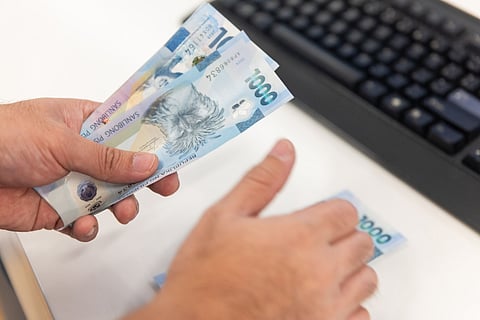PHP-AED: Why the Philippine peso remains stuck near three-year lows
Peso struggles near three-year lows as weak growth and dollar strength fuel volatility

Dubai: The Philippine peso continued to struggle this month, trading between 15.87 and 16.05 against the dirham as political pressure, slowing growth and a widening corruption probe kept investors on the defensive. The currency’s performance reflects one of its most turbulent stretches since 2022, with market confidence weakened by governance concerns and an uncertain global backdrop.
Scandal-driven uncertainty bites
Growth has already slowed, with GDP rising only 4% in the third quarter. Foreign and domestic investors are demanding higher risk premiums as protests intensify and another demonstration is planned for November 30.
A currency losing its footing
With the dirham pegged to the US dollar, the AED rate has tracked the peso’s slide. This month’s trading shows a narrow band between 15.87 and 16.05 per dirham, underscoring the currency’s struggle to stabilise despite occasional intra-day rebounds.
Analysts say the latest weakness is tied to both domestic and global pressures. A stronger US dollar, softer remittances and higher import costs have added to the strain. Capital is flowing out or staying on the sidelines as confidence erodes. Without a turnaround in spending and governance, the currency remains exposed.
Rajesh Kumar, Head of Treasury at Lulu Exchange, expects the currency to stay broadly range-bound in the near term. “The Philippine peso is expected to remain broadly stable against the dirham in the coming months. The AED is pegged to the US dollar, so the exchange rate largely mirrors USD/PHP movements,” he said.
He added that the peso’s trajectory would depend on the strength of the US dollar, BSP policy decisions, oil price swings and global risk appetite. “Easing inflation and steady remittances should provide stability to the peso, while spikes in oil or global uncertainty could add mild pressure on peso and can lead to depreciation,” he noted.
Kumar said further weakness was possible if global conditions deteriorate. “Further depreciation in peso against the Dollar towards 60/$ (16.30 against dirham) is possible if global oil prices rise significantly or if the US Federal Reserve delays rate cuts,” he said.
Hasan Fardan Al Fardan, CEO of Al Fardan Exchange, shared a similar view. “The dirham is pegged to the US dollar, so the peso’s movement against the AED will largely mirror how it performs against the USD,” he said. He expects modest year-end strength but noted that inflation and remittance flows will shape the direction.
He added that a deeper slide cannot be ruled out. “There is a possibility of further peso weakness, but it is not the base case,” he said. According to him, a sharper decline would require a stronger dollar, higher food or fuel inflation, faster BSP rate cuts or weaker remittances.
Seasonal cushioning
Historically, the fourth quarter is a steadier period for the peso because of the seasonal lift in remittances from overseas Filipinos. That pattern may offer some support, although analysts warn it may not be enough to counter deeper structural concerns unless confidence returns.
For now, the peso sits at a crossroads, weighed down by domestic upheaval and global forces that show little sign of easing.
Sign up for the Daily Briefing
Get the latest news and updates straight to your inbox



